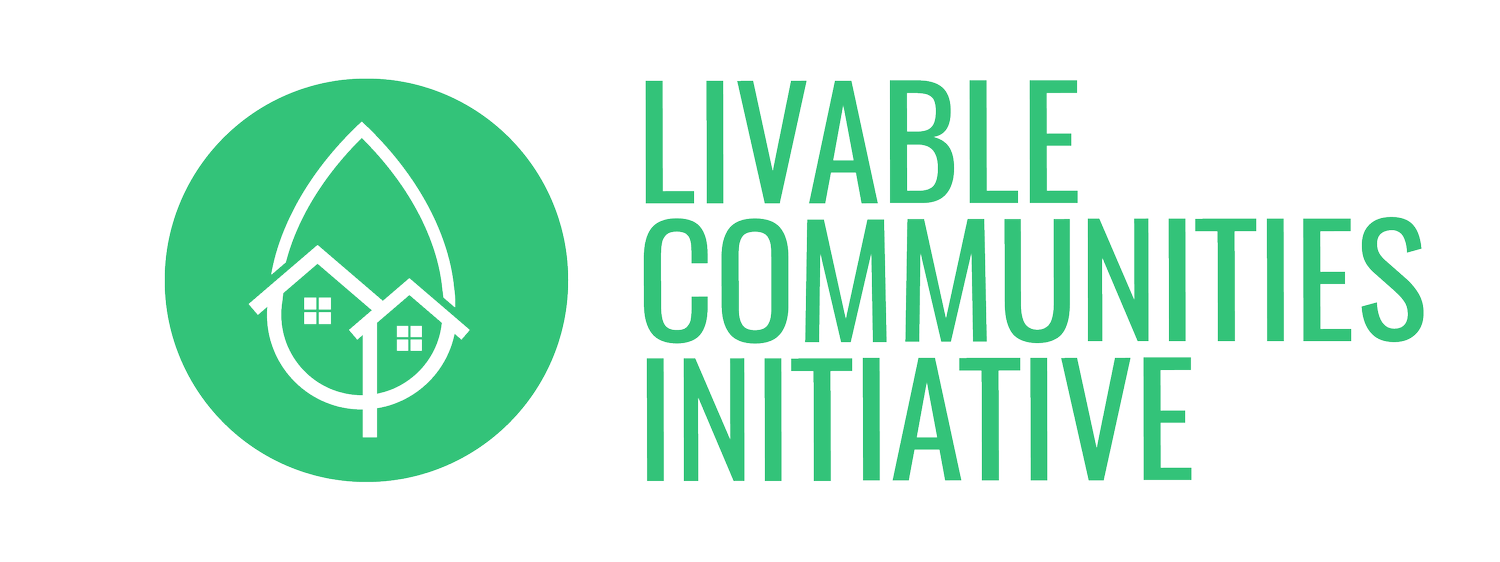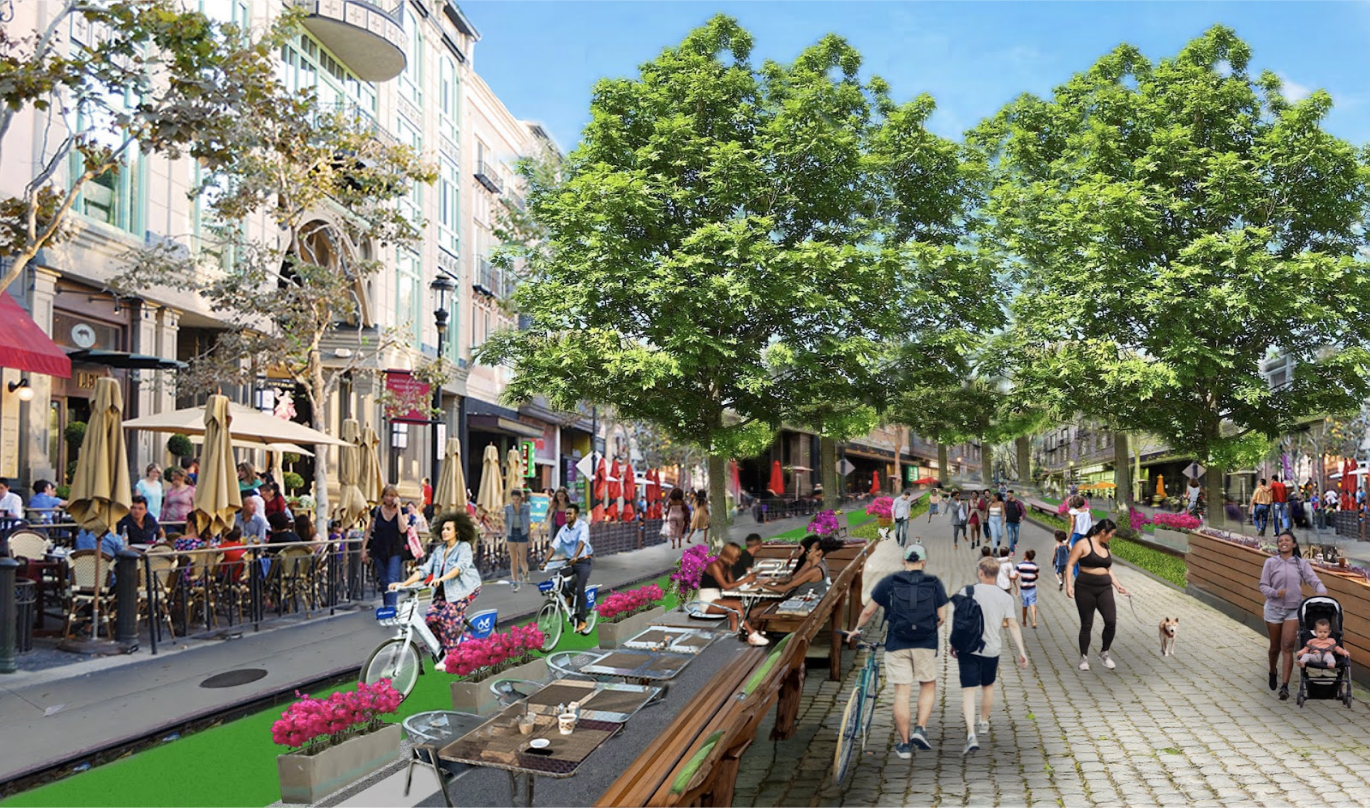Equity
The Importance of Street Design for Equity
The LCI is a community-driven opt-in program open to any neighborhood that wants it, with a particular focus on neighborhoods near high-quality transit stops. Much of our organizing efforts have centered on building support for new housing in high-opportunity neighborhoods on the Westside that have not built their fair share of housing over the past several decades. One of our primary goals is to galvanize mixed-income communities, Community Land Trusts, and equitable access to amenities like jobs, high-performing schools, and green space. To do so, we must build housing that is affordable in neighborhoods that are historically white, and racially and socioeconomically segregated.
A group of community leaders in South L.A. also have embraced the LCI as a way to bring safer street infrastructure, walkability, climate justice, more affordable housing, and better amenities to their historically under-served neighborhoods, where skyrocketing housing prices are causing displacement. National DEI expert Dr. Tunette Powell, longtime Leimert Park resident Alberta Brinson Moore, educator and Pastor, Dr. Peter Watts, Jr. are leading efforts to champion LCI communities in South LA neighborhoods near the new Metro K line. Public investments in safe street infrastructure should always be prioritized in communities that face a disproportionate share of vehicular violence.
Displacement and Gentrification
From the beginning, the LCI was designed to address displacement and gentrification and to build more housing in neighborhoods with a history of exclusionary zoning, which have not built their fair share – namely, the Westside, Central LA (Hollywood/Mid-City/Larchmont), and the Valley – which together are short about 400,000 units. The policy is called the Equitable Distribution of Affordable Housing, and it was passed by the LA City Council.
Displacement and gentrification are very complex issues that are both racial and racializing. As prices rise, people from higher socioeconomic backgrounds are priced out of high-opportunity neighborhoods, they move to communities with more affordable housing options, and this often means pushing out long-time residents, namely Black, Brown and low-income residents who have been historically and contemporarily marginalized.
LCI is limited to commercial properties with no residential tenants. In recent years, there have been a number of strategies introduced to mitigate displacement. Policies where displaced tenants are given the right to return once a project is finished, or given the option of a cash pay-out if displaced. However, recognizing that despite best intentions, these strategies aren’t always ideal for displaced tenants, the LCI will avoid the issue of displacement in its entirety by limiting the program to commercial sites where there is currently no existing housing. The LCI is also working to create a plan to protect small businesses both during and after construction.
The LCI will also solely focus on building housing that is parking free or only provides parking to address accessibility concerns. We recognize that on-site parking substantially raises rents, making units unaffordable, and forces people who don’t own cars to pay for parking they never use.
Additionally, by focusing on high-opportunity neighborhoods, the LCI’s goal is to remove the displacement and gentrification pressures on low-income communities and communities of color. The LCI can also create more affordable models of housing for residents in neighborhoods across LA – compact apartments for seniors to age in place and for adult children to live in the neighborhoods where they grew up. The housing typologies we are proposing are far more affordable than most new market-rate and luxury housing being built today. The LCI also has anti-luxury provisions that incentivize natural affordability, reminiscent of workforce housing from pre-car eras.
Healthy Homes
California State bills AB 2011 and AB 2097 opened the door for streamlining and fast tracking more housing along commercial corridors without parking requirements – but there are serious safety, equity and health concerns with putting affordable housing along high-traffic, noisy, dangerous, polluted streets. “Nobody’s home should be a “buffer” against traffic noise and pollution for someone else’s,” writes Daneil Oleksiuk for the Sightline Institute. The health impacts of exposure to traffic pollution include: respiratory diseases, neurological decline, pregnancy-related and birth outcomes, cancer, diabetes, eczema, mental health impacts from noise exposure and stress.
Speeding cars make it unsafe to cross the street and get places – especially for children, people with disabilities, and seniors – forcing people into cars for their own personal protection. And the faster the cars, the fewer the pedestrians. A street cannot be both a highway and a welcoming and vibrant street where it’s nourishing to live.
The LCI includes a street plan that minimizes the “pain points'' of traffic and parking while creating a win-win for the community and the city. In the LCI model, different streets can serve different purposes: some streets can be focused on traffic flow, while other streets can be for housing, bikes, and slow cars (Larchmont Blvd.-style). Or communities can opt for a complete pedestrian overhaul and/or use existing plans to pedestrianize a street or slow cars substantially. The goal is always to create walkable, vibrant, safe “15 Minute” communities. The street will have housing above stores at price points that are affordable to moderate-income and low-income households, and local workers, and where people are drawn to walk, bike, shop, and linger – shifting trips away from cars and thus reducing traffic and pollution, while also creating an amenity for everyone – including for nearby residents and the entire city.
The LCI also unlocks Courtyard Buildings that ensure ample air and light in every room.
Mobility Justice
While many people want to own a car, many others would prefer not to. “50% of Americans are priced out of the car market,” according to Jonathan Smoke, Chief Economist of Cox Automotive. Cars are expensive – more than $10,000/year on average. Households in the lowest 20% income bracket in the US spend an average of 31% of their income on transportation. LCI creates safe, walkable, bikeable, and healthy communities around transit. It is both a 15 Minute City and a TOD (Transit Oriented Development). The benefits of not having to own a car and living on a car-light, healthy street are numerous. There are substantial health benefits to biking, including adding six months to your life.
The LCI is also a neighborhood designed for people who can’t drive - people with disabilities (of whom a higher number can use an adaptive bike than can drive), seniors (who outlive their ability to drive by 7-10 years), and the 15% of Angelenos who do not drive, a majority of whom are low income people of color. Additionally, LCI gives kids and teenagers the freedom to bike safely to a friend’s home and explore the city without constant adult supervision. In the Netherlands, where biking infrastructure is completely safe, kids as young as age 10 bike alone – and they are the happiest kids on earth.
Democratizing building and neighborhoods
The LCI creates an opportunity for small mom-and-pop commercial property owners to develop housing on their own lots (much like ADU laws and SB9) – for themselves, family, friends, or for income – not for hedge funds or private equity firms. The LCI will focus its policy incentives on un-assembled parcels, not half-block sized development sites (lot assembly drives up the cost of land by 30-40%, and eliminating the need to assemble parcels lowers the cost of building housing, making more affordable housing models economically feasible to build.) By focusing on parcel-by-parcel development, it also democratizes building by creating opportunities for mom and pop local builders. Right now, there are only a small number of developers who have the deep pockets and expertise to build projects in LA. The LCI hopes to open up thousands of previously undevelopable parcels, and support small builders with streamlining and pre-approved Standard Plans.
The LCI also democratizes access to the highly desirable amenity of walkable neighborhoods, and creates housing options in high-opportunity neighborhoods with great schools, jobs, amenities and transit.
If fully implemented, the LCI could also unlock hundreds of parcels of free land for subsidized affordable housing and Community Land Trusts – city-, county-, and LAUSD-owned lots and surface parking lots (that can put necessary parking underground).
We believe Los Angeles can become the best in the nation to help reduce the disproportionate effects of pollutants and other environmental harms on low-income communities and communities of color by addressing traffic, pollution and climate change directly.
Sign your name here to support LCI and help bring livable, walkable and bike-able streets to Los Angeles!
Articles & Resources
-

Housing and Architecture
-

Car-Lite Communities
-

Parking Ruins Everything
Technical Papers & Details














